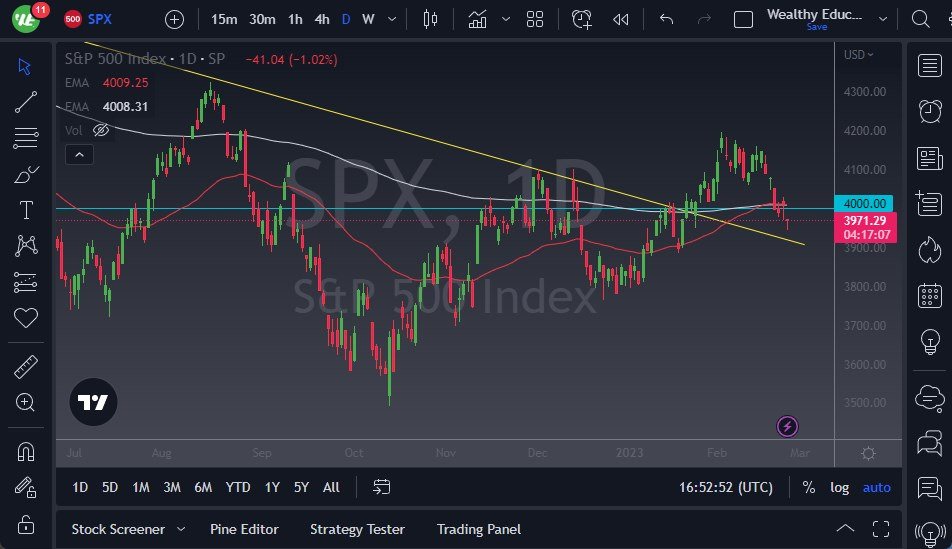On Friday's trading session, the S&P 500 index experienced a significant decline, reflecting the ongoing negative sentiment in the stock market. The Core PCE Price Index was released, indicating a 0.6% figure, surpassing the expected 0.4%. Furthermore, the previous month's figure was revised to 0.4%, revealing that inflation remains a significant concern. Personal spending also rose 1.8%, surpassing the anticipated 1.4%, indicating that US consumers are stubbornly persistent and could continue to cause inflationary issues.
Focus on the Fundamentals
Despite Wall Street's recent narrative that the consumer is financially stable due to pandemic savings, most spending is still being done on credit cards. Wise investors are recognizing that the combination of this and the Federal Reserve's tighter monetary policy is likely to have a negative impact on the economy. It's challenging to determine whether Wall Street is paying attention to the economy or liquidity issues. However, it seems that the latter is the only thing that has mattered for the last 14 years. The stock market has abandoned the notion of measuring the US economy and, instead, measures the amount of liquidity provided by the Federal Reserve to Wall Street for investment purposes.
- The market is anticipated to remain volatile, with a downward trend likely to continue. With the market now below the 50-Day EMA and the 200-Day EMA, rallies are expected to fade, particularly as US yields continue to rise.
- It's remarkable that the market is only now beginning to accept the Federal Reserve's position on inflation.
- As a result, investors are recalibrating their inflation expectations.
Going forward, investors should remain vigilant and closely monitor any potential developments that could impact the stock market. The economy's performance, as well as the Federal Reserve's monetary policy, will play a significant role in shaping the market's outlook. As of now, it's likely that the market will remain volatile and continue to experience downward pressure, leading to a "fade the rally market" mentality among investors. With that being the case, and the psychological shift that we have seen, I do believe at this point in time we make a look into the 3900 level, perhaps even followed by the 3800 level where we had bounced from previously. In general, I don’t have a whole lot of interest in buying this market, at least not until something changes in the bond markets, something that doesn’t look very likely.
Ready to trade our S&P 500 analysis? Here’s a list of some of the best CFD brokers to check out.

